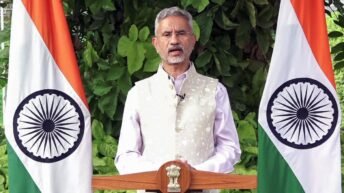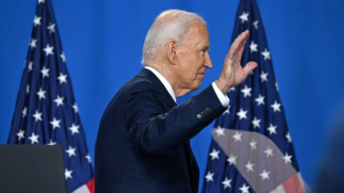|
Listen to article
Getting your Trinity Audio player ready...
|

Recent skirmishes between the People’s Liberation Army (PLA) of China and Indian troops in the Union Territory of Ladakh and strategic investments by the Chinese government in various hydro projects in the Gilgit Baltistan region of Pakistan Occupied Jammu & Kashmir (POJK), raised an alarm for the water security in India. The Himalayan ecosystem is home of major rivers and hence the principal source of water in India and all other neighbouring countries. The fresh water abode of Himalayas should be protected. Climate change has brought the subject beyond the scope of mere negotiations. At this critical junction, there is need of rethinking India’s sovereign water diplomatic policies and only with due diligence and conservation in mind, can the dispute about water distribution reach a just resolution and ensure longevity of this natural resource.
Water Conflicts: India, China & Pakistan
Water conflicts in South Asia among India, Pakistan and China reflects the historical burden of the colonial past of the Indian subcontinent. In the current geopolitical situation in which water disputes are major factors in diplomatic relations, there is a need to devise negotiation tactics for the settlement of trans-boundary water disputes.
Equivalent economic, military, scientific and engineering capabilities usually ensure mutual satisfaction for the negotiating parties. The solution to any water conflict results in treaties, conventions or the clearance for a specific project. However, the outcome of any resolution must be judged on the basis of optimal economical, ecological and social effects.
In the current geopolitical situation in which water disputes are major factors in diplomatic relations, there is a need to devise negotiation tactics for the settlement of trans-boundary water disputes.
India, the divine land, is blessed with aquatic, ecological and social diversity. It accounts for 18% of the world population but only about 4% of the world’s water resources that accounts for its categorization as a water stressed country. India, in fact, is facing the worst ever water crisis in its history and millions of lives and livelihoods are under threat. With some 600 million people facing acute water shortage at present, the crisis will further worsen as demand is projected to be twice larger than the available supply by 2030.
The Himalayas are at the source of nineteen major rivers, out of which Brahmaputra and Indus are the largest rivers, having catchment basins in the mountains of about 100,000 square miles (260,000 square kms) in extent. However, the source of both these mighty rivers is the Tibetan Plateau. The Indus and Brahmaputra both originate at Lake Mansarovar. The Indus runs across Himalayan ranges, enters India in Ladakh and flows toward Gilgit Baltistan region of Pakistan occupied Kashmir, then takes a southern direction into Pakistan before merging with the Arabian Sea.
Brahmaputra after flowing along Southern Tibet, enters Arunachal Pradesh in India, thereafter flows Southwest along Assam and South into Bangladesh. Both its branches meet with the Ganga river in Bangladesh, making the great delta of Ganga-Brahmaputra a highly fertile region ashore of the Bay of Bengal.
With the highest populations and going through rapid industrialization, India and China have rising water needs. That is why both the countries are investing in big projects in the region to meet the energy demands and agricultural requirements. Chinese economic strength enables the state to build giant dams on these rivers.
The formation of the Ministry of Jal Shakti in May 2019, clearly indicates the priority which the present government grants to tackle the challenges of water security in future.
In January 2013, China approved mega dam projects on the Brahmaputra River as part of its 12th Five-Year Plan. Dam projects such as Zangmu Dam (510 MW), on the Yarlung Tsangpo, the upper stream of Brahmaputra river near India-Bhutan border, the Lalho project in Xigazê (near Sikkim), undeclared under-construction Dagu, Jiacha and Jeixu dams pose a serious threat to the ecology of the eastern Himalayas. These large dams will control part of the flow of the mighty Brahmaputra and could turn into a seasonal river in India, affecting the livelihood of millions.
Although India has signed a Memorandum of Understanding (MoU) with China in 2002, for the sustainable sharing of hydrological information on the Brahmaputra River but during the Doklam standoff in 2017, China had refused to share the flood data with India. It is evident that in the absence of any signed treaty between China and India, China uses its upper riparian status for political leverage.
On the western front, this year, the Chinese state-run firm China Power and Frontier Works Organisation (FWO), a commercial arm of Pakistan’s powerful military, have signed a contract worth USD 5.8 Billion Dollar for the construction of the Diamer-Bhasha dam (4800 MW) on the Indus in Gilgit-Baltistan in Pakistan occupied Kashmir (PoK) despite objection from India.
Prime Minister Modi’s government has already redefined India’s water diplomacy. Under his visionary leadership, India has successfully completed and commissioned various projects. The formation of the Ministry of Jal Shakti in May 2019, clearly indicates the priority which the present government grants to tackle the challenges of water security in the future. The government is working on various fronts to provide hydropower energy and efficient use of water-ways.
Water Diplomacy & Act East Policy
The Mekong is a major trans-boundary river which after origination in Tibetan Plateau runs through China, Myanmar, Laos, Thailand, Cambodia and Vietnam. It is a source of irrigation, fishery and navigation for lower riparian states. However, the construction by China of ten hydropower dams is a cause for alarm in the countries downstream. In the absence of any international treaty between China and lower riparian states, China could use these dams to control the flow of Mekong. Huge fluctuation in downstream water flow has devastated the lives of millions in the region in the past and in present also such problems have already been reported near the Jinghong Dam.
It is high time to build a framework for river management agreements among the ASEAN & SAARC countries.
In this scenario these densely populated Southeast Asian countries have to rely on the goodwill of China, making them prone to Beijing’s water blackmail. Chinese leverage over these countries could be used to India’s benefit in this region. Sharing of the hydrological, engineering, economical, computational modelling and ecological knowledge could help these countries to successfully negotiate with China.
There is an urgent need to investigate the linkages of Chinese infrastructural plans in the region under the Belt and Road Initiative (BRI) and the hydrological and ecological imbalances it will cause in the region or in any country. Simultaneously, India needs to integrate water geo-politics in its diplomacy. India should group with other lower riparian states of the Brahmaputra Basin such as Bangladesh, Bhutan and Myanmar to counterbalance the Chinese hydro-hegemonic attitude. On the other hand, India should reach out to countries like Thailand, Cambodia, Laos and Vietnam who are the prospective victims of the Mekong River Projects undertaken by China.
It is high time to build a framework for river management agreements among the ASEAN & SAARC countries. A regional water sharing framework and treaty should be enacted with provisions addressing socio-economic, historical and environmental concerns of this part of the globe. With an efficient water diplomacy, India can ensure a sustainable water future for its people and for the neighbourhood.
India needs to take the lead role in the establishment of a regional hydrological data centre to exchange data across the Himalayan region
India needs to take the lead role in the establishment of a regional hydrological data centre to exchange data across the Himalayan region so that a comprehensive water management and harvesting policy may be formulated. India’s achievement in space technologies may pave the way for a regional exchange of satellite data acquisition, interpretation and decision making.
India and ASEAN countries could jointly establish meteorological and hydrological monitoring stations at strategic locations in the region. Exchange of meteorological and hydrological data not only helps to forecast natural flooding and drought conditions but also prevent hostile state actions in this domain. There is a critical need for an integrated action plan for water security including various stakeholders to counter China’s drive for water hegemony.






A beautiful thought provoking article but why don’t we share these concerns with political and social leadership of Assam in particular and the NE in general?
Its of urgent of necessity to take this message to youth brigade, pressure groups, else GoI has to face too many protests in the region.
Very informative and instructive article. Kudos to the authors.
Beijing is using Himalayan rivers like Brahmaputra against India for its geo political goals. Rightly said that joint institutional mechanism with various other countries in the region is needed to address water security issues.